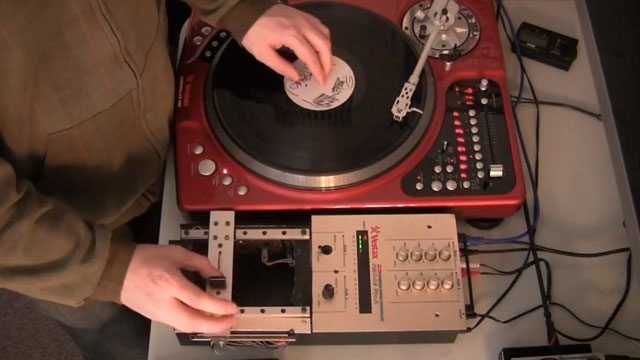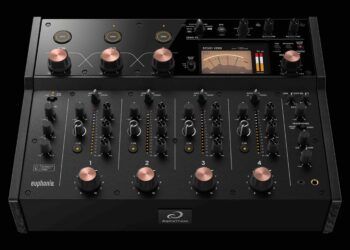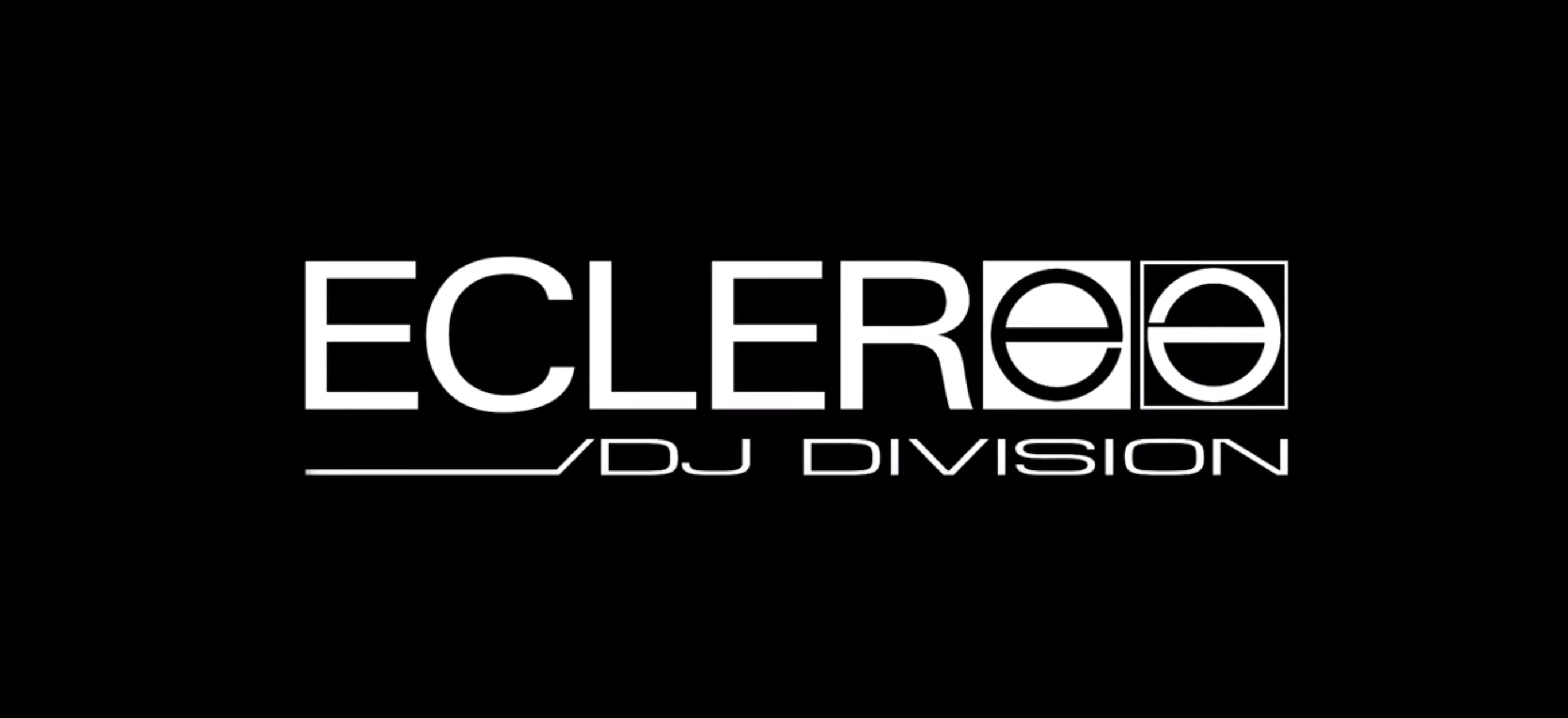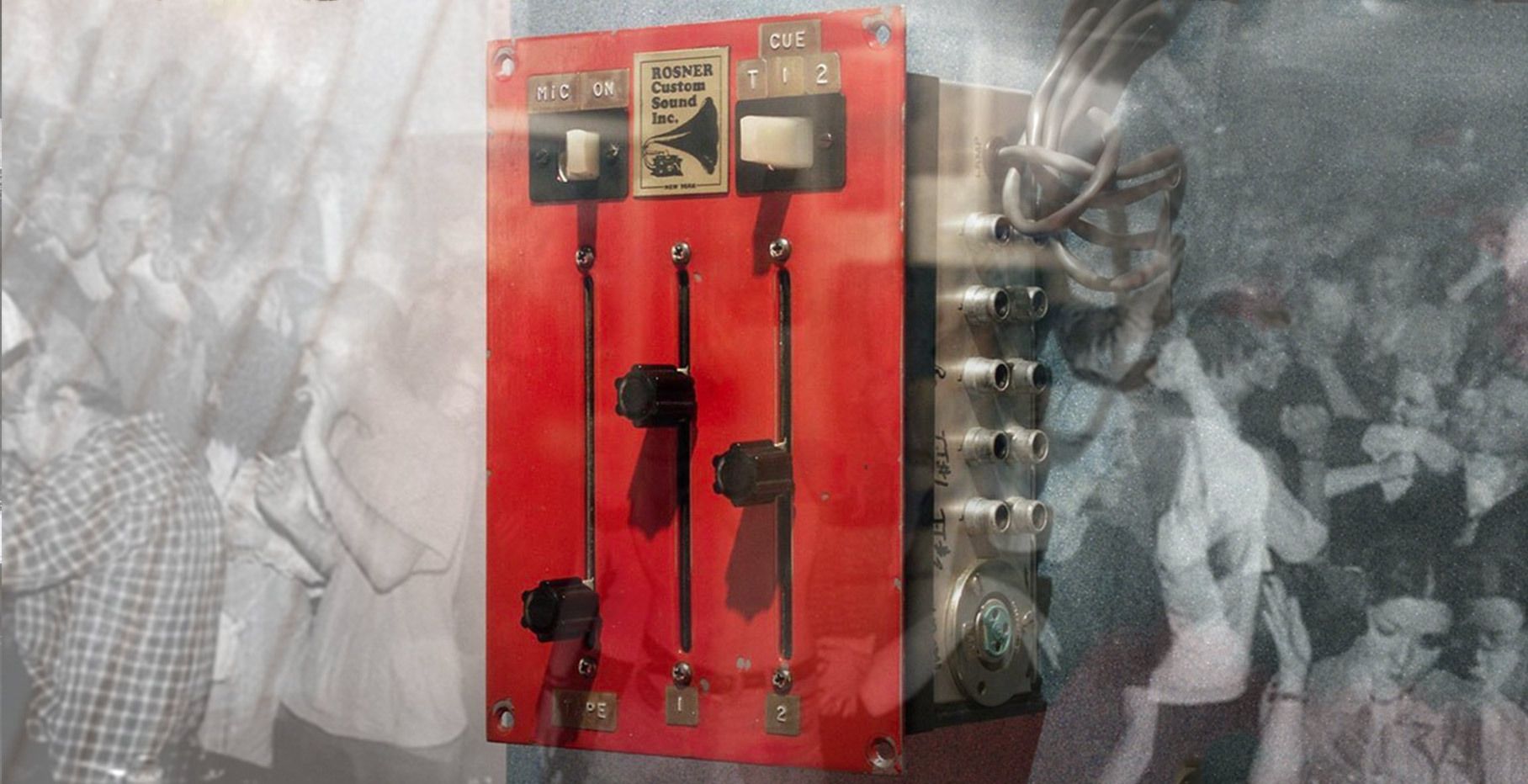You know that thing about starting with a penny and doubling up on every square of a chess board making you a very rich person indeed? It’s like that with DJ tools, except only the people at the start get rich. For every one innovation, there are so many copy cats that spawn other copy cats that before you know it there’s an identikit two channel mixer round every corner.
It’s nice, then, to recognise genuine inventions and innovations – like John Beez’s Fretless Fader. The Fretless Fader concept involves a cross fader which can move vertically as well as horizontally, allowing an extra parameter to be controlled simultaneously with the traditional fader movement – most notably, pitch. It’s probably best demonstrated in video:
John has been prototyping the fretless fader for the past couple of years, tweaking and refining as he slowly but surely approaches manufacture – and gaining excited support from some big name fans. We thought it’d be great to find out where he’s at and get some pearls of wisdom, so I had a word…
DJTT: Tell me a little about the fretless fader as an idea…
JB: First off I had the [Vestax’s super limited edition] Controller One turntable and I was using it, but to hit the buttons you have to take your hand away from the vinyl so it was almost there – they [Vestax] had a solution for that, as far as keeping your hands in the regular scratching position, they were going to come out with a foot pedal, but it was dropped from development. That was when I started brainstorming.
I had a little experience repairing Vestax mixers as a hobby, and one time I had two mixers open and I hung the cross fader between the line faders so I could cut and fade in and out at the same time – that was kinda neat. I thought “why don’t I take the concept of moving up and down and apply that to MIDI?” I spent a year thinking about that, and after that I built the first prototype.
Essentially the motivation behind it was to be able to scratch and play a melody dynamically at the same time in a way that made sense.
DJTT: Tell me some of the design issues you needed to overcome.
JB: Design wise it’s kind of a challenge to make it slick on the up and down movement so we tried a couple of different ways to make it slide. For the first prototype just making the electronics work was a big challenge, because I essentially made a sliding crossfader first and for a few months I had no idea of how to make it functional! (laughs) Actually the new prototypes as we bring it closer to a manufacturable product works much differently to the last one, adds a whole bunch of new functionality.
DJTT: Oh okay, what kind of functionality?
JB: Well the original prototype was literally just a mounted crossfader to see if I could make it slide smoothly, so it didn’t have any functionality at first. Then I started studying MIDI and ways I can kinda get that linear positioning to talk to MIDI, and the next prototype just had a single scale, mounted in the Vestax 06 Pro. The next one, that you have on the video, has two scales changeable by a switch. The one that we have now – that hasn’t been seen yet – has 13 scales built in, as well as built in key transfers. Also to make it easier we’ve made the range of notes adjustable, so you can play two octaves all the way down to just three notes.
DJTT: Give me an idea of how your brainstorming sessions work and how you come to decide on these features.
JB: I spend a lot of time thinking about what I can do to make it a more accessible and musical device. For instance when I had major and minor up there it was a lot of fun but at the same time you’re missing that blue note, a whole bunch of other notes in a scale. I figured you should definitely have those so that you can play different styles. Also, I’m used to the design, but for people that aren’t as precise with the fader hand we need to make it easier for them, and so we made the notes adjustable too. To be honest when it comes to the features, all those things were in my head from the jump – as soon as I hit that we could have the slide, [the rest came like] “it’d be cool if we could have this, that”. A lot of the time it was my technical shortcomings that prevented me from putting things in, until I found ways – and a couple of people to help. I have ideas all day, it’s just implementation that’s the challenge.
DJTT: So do you have a small team working on the product now?
JB: Very small! (laughs)
DJTT: Is the finished product planned to drop in to mixers as we’ve seen?
JB: No, to make it a drop in product would require too much modification, and maybe fabrication, so as a commercialised thing that was never my intention; I want to have a standalone product. The new prototype is made from the ground up: a two channel mixer with built in MIDI controllers.
DJTT: Have you got any other DJs on the testing?
JB: Greyboy has been working with one of the first prototypes, and last week I brought it up to San Francisco and DJ Teeko and Max Kane of Fresh Analog Music Experience got to test it and were really enthused about it.
DJTT: Ah that’s cool, I guess you could say that Teeko has been one of the main proponents of the Controller One, so… anyway, any advice for aspiring inventors?
JB: If there’s something you have an idea for you don’t have to stress if you can’t figure everything out at first. All you have to do is figure out each piece of it sequentially. If it takes you months, that’s fine, that’s what I did. When I first came up with this idea I had no real concept of how to make it functional but I did my research, I spent a lot of time thinking about it, writing down ideas, and that’s how I came to have a prototype for it.
DJTT: Thanks for the chat John – any last words?
JB: I appreciate people being patient, because I know a lot of people keep asking why it’s not out yet. The first prototype is very different to the one we’ve got now, and we basically had to make a mixer from scratch so that’s why prototyping has taken a long time!
We’re definitely interested in seeing how the fretless fader develops. Has this inspired you to approach something in a new way yourself? Let us know!









